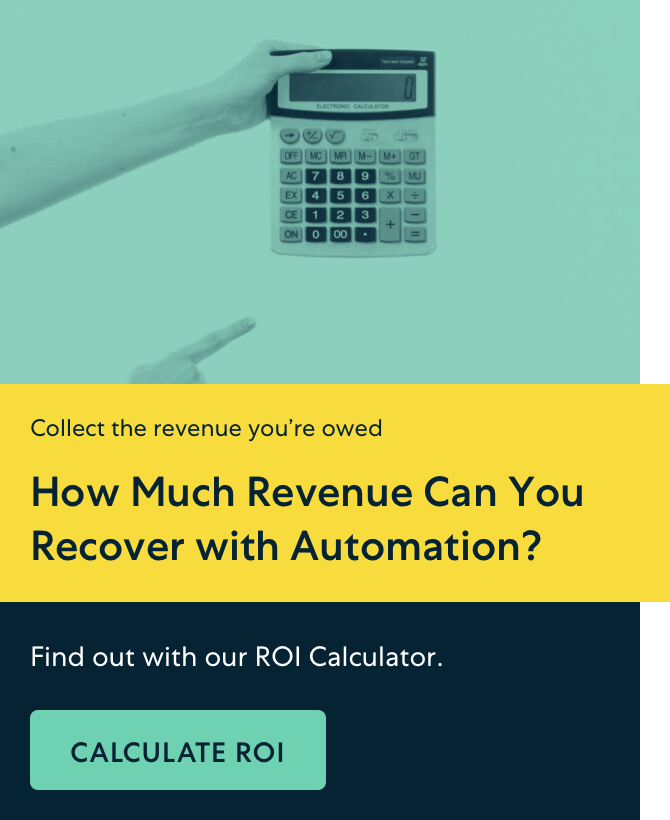T2D3 stands for “triple, triple, double, double, double,” and was introduced as a concept by SaaS (Software as a Service) investor Neeraj Agrawal. In brief, the metric-turned-method involves two years of tripling annualized revenue growth, then three years doubling it.
The premise is that SaaS businesses that can follow the T2D3 revenue growth pattern go from $1-$2 million to over $100 million in annual recurring revenue (ARR) in just 5-6 years, and earn a $1 billion valuation.
Often, investors can provide insights into a business’s value that inspire owners to see their growth and profitability in a new light. This was the case with the Rule of 40, and is also the case with T2D3. First explored in 2015, T2D3 is still used today.
When he introduced T2D3 in his article, “The SaaS Adventure”, Agrawal explained how he’d gone from using it as a metric, to encouraging businesses he had invested in to meet the defining characteristics of each phase involved. Since then, other SaaS businesses have tried to emulate the journey.
The T2D3 path to success
While T2D3 certainly isn’t the only path to a $1 billion valuation, it’s a well-documented way to get there. In fact, it’s the route taken by such well-known companies as NetSuite, Salesforce, and Zendesk.
T2D3 isn’t typically a first step; rather, it’s a course taken after a product or service idea has been fully fleshed out, partners identified, and a product-market fit established. Ideally, a business taking on this approach has already reached $2 million in ARR and has acquired a few good-fit customers.
Once that has been established, the ‘go-to-market’ path to $1 billion is as follows:
T2D3 Year One: Triple to $6 million
For many businesses, tripling to $6 million in ARR is a take-all-you-can-get effort. Founders will accept all deals, even from customers who aren’t a great fit, just to build revenue.
This is less than ideal, however. A better approach is to focus on creating a small but focused sales team that knows who their ideal customer is and how to make the most of market peaks. With stronger customer fits and a sales team primed to take advantage of upswings, a more stable base is built for continued growth.
T2D3 Year Two: Triple to $18 million
During your second year of the T2D3 cycle, you’ll learn quickly whether customers like your product or service enough to renew, or whether they’re churning out. If they like what you provide, they’ll also likely tell their colleagues about the business, assisting with customer acquisition. This is why those good-fit customers in year one are so important.
At this point, the sales team is likely growing and demanding another layer of management. While this pushes founders/CEOs away from sales, it also frees them up to focus on more important things for the journey ahead.
T2D3 Year Three: Double to $36 million
By the third year, a strong sales team with multiple managers should be formed with sights set on international sales. Here, Agrawal emphasizes quality over quantity: it’s better to have a strong but small presence in a few countries rather than a weak presence in many. Deep connections with international references and leaders will go a long way down the line.
T2D3 Year Four: Double to $72 million
At this point, operations become a focal point. Strategic hiring, promoting, and managing is key to adjusting to non-linear growth and getting partners or reseller channels to work. Agrawal’s tip? Don’t push for resellers until you’ve hit a $50 million run rate—this will help resellers prioritize your business over others.
T2D3 Year Five: Double to $144 million
Crossing the $100 million threshold unlocks the door to a $1 billion valuation, assuming other metrics look strong. At this point, looking into the Rule of 40 as a new metric is worth considering. With time, a business can cross the threshold of $1 billion in ARR. SparkPost set its sights on this goal after announcing their T2D3 success in 2017.
Is T2D3 right for your business?
It’s important to note that while T2D3 is used as a metric by investors to predict a business’s success, it isn’t an indicator of success in and of itself. Many things besides valuation factor into that measure.
For example, experts often highlight the fact that public companies can be unprofitable but highly valued. How can this happen after a phase of rapid growth? With some research and data-crunching, Capshare found that the answer may be free cash flow (FCF).
The correlation between FCF and enterprise value was actually stronger than that between revenue and enterprise value, and FCF can be increased by raising revenue or profit, meaning profit may be just as good at achieving high valuation. This lines up with marketing specialist and venture capitalist Guy Kawasaki’s belief that “sales fixes everything.”
If you have the income, cash will flow, making everything else about running a business easier.
Here are some examples of highly valued businesses without T2D3-style growth:
- Qualtrics. SAP paid $8 billion for Qualtrics last year, despite Q3 revenues of $372 million and 42% year-to-year (YTY) growth. At 20x revenue, it’s an impressive valuation. Qualtrics attributes this to their profits, while others note the rise of “feedback economy,” which gives the survey and feedback provider an edge.
- PluralSight. PluralSight also went public last year after achieving unicorn status with their educational software. The business credits high profit with their valuation, and promises to make waves in the growing corporate e-learning market. Worth noting, of course, is that the business was founded in 2004 and bootstrapped funding until finally seeking venture funds in 2013.
There are advantages to leaning on profits as these businesses have done. While venture capitalists tend to have diversified portfolios which spread risk, the average SaaS founder does not. An investor can weather a blow to a new startup much better than the founder of that startup can, and that can affect both decision-making and sustainability. If a recession occurred, cash streams dried up, or money otherwise became hard to come by, high profits offer a much better buffer for a business than rapid growth. As Capshare points out: it’s better to be low-growth and profitable than bankrupt.
With those examples and considerations, it’s hard to deny that success can be found without the heavy focus on rapid growth. That being said, growing too slowly does have drawbacks, as venture capitalist Christoph Janz points out in his blog post, “How Fast is Fast Enough?”
While achieving $100 million in ARR is possible to do slowly, it is exponentially more difficult because growth rates tend to decline, not rise, over time.
Slow-growing companies also struggle to attract the best talent, a requirement for SaaS ventures with high sights, and tend to fall behind faster-growing competitors scooping up talent and customers. An intentional slow-growth plan can blow up in a business’s face if the conditions aren’t right.
As with any metric or method, none stand alone
Raising your valuation is important, but it is not the only indicator of business success.
Actual success can depend on many things, like the ability to weather recessions or other market storms. It means knowing when a money-raising effort promises a solid return on investment, versus when it’s a desperate grab at preservation.
In his original article, Neeraj Agrawal calls T2D3 a “sure-fire” way to reach SaaS go-to-market success. It may very well be. He also admits, however, that it is not the only way to achieve goals and hit high valuation. Remember that to use it, it’s important to consider the greater context of what your business’s success looks like.
FAQs about T2D3 Path
Q: What does T2D3 stand for in the SaaS industry?
T2D3 stands for “triple, triple, double, double, double.” This concept was introduced by SaaS investor Neeraj Agrawal and involves two years of tripling annualized revenue growth, followed by three years of doubling it.
Q: How does the T2D3 concept contribute to SaaS business growth?
SaaS businesses that can follow the T2D3 revenue growth pattern can potentially increase their annual recurring revenue (ARR) from $1-$2 million to over $100 million within 5-6 years and achieve a $1 billion valuation.
Q: Is T2D3 the only path to a $1 billion valuation for a SaaS business?
No, T2D3 is not the only path to a $1 billion valuation. It is, however, a well-documented and tested method as evidenced by successful companies like NetSuite, Salesforce, and Zendesk who have followed it.
Q: At what stage does a SaaS business typically adopt the T2D3 methodology?
T2D3 isn’t typically a first step; it’s a course taken after a product or service idea has been fully developed, partners identified, and a product-market fit established. A SaaS business that decides to utilize this approach has usually already reached $2 million in ARR and has acquired a few good-fit customers.
Q: Is there a specific “go-to-market” path for SaaS businesses following the T2D3 methodology?
Yes, there is. It requires the establishment of a small but focused sales team. Then, symbiosis between solid customer fit and a sales team primed to take advantage of market upturns aids in the creation of a stable base for further growth. At certain stages, strategic hiring, promoting, and managing become pivotal to adjust to non-linear growth.
Q: Are there examples of businesses with high valuations without T2D3-style growth?
Yes, companies like Qualtrics and PluralSight have achieved significant valuations without following the T2D3-style growth pattern. They attribute their success to high profits, despite slower growth rates.
Q: Does T2D3 guarantee success for a SaaS business?
Although Neeraj Agrawal considers T2D3 as a “sure-fire” way to reach SaaS success, it itself isn’t an indicator of success. Success can depend on several other factors like the ability to weather recessions or other market issues, along with making wise decisions about raising money and investments.
Q: Can slower growth also be beneficial for a SaaS company?
Yes, slower growth can have advantages. It can provide a business with a better buffer in the event of recessions or if cash streams dry up. However, slow growth can also make it harder to attract top talent and to stay ahead of faster-growing competitors. It’s important to strike a balance based on the unique circumstances and positioning of the business.





